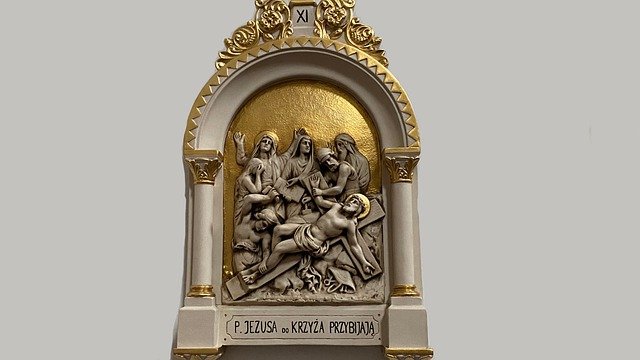
The journey taken by Jesus from his capture to his crucifixion and burial is called the Way of the Cross.
Viacrucis is a concept that refers to the journey that Jesus took from the time he was captured until his crucifixion and subsequent burial. The term can also be mentioned as via crucis , a Latin expression that can be translated as "way to the cross."
It is possible to use the notion in different ways. On the one hand, there is the specific path that, according to Christians, Jesus took before his death. Throughout this journey, various incidents took place: Jesus falls, meets his mother Mary , is undressed, etc.
The Via Crucis as a representation
Via Crucis is also understood as the representation of the martyrdom of Jesus . In these representations, each of the incidents is known as a station. Therefore, according to Christian tradition, the Way of the Cross is made up of fifteen stations, from the first station where Jesus is sentenced to death to the last station, where he is resurrected. This number, however, has varied throughout history .
Specifically, the aforementioned stations are the following:
-Jesus sentenced to death.
-Jesus carrying the cross.
-Jesus falls, for the first time, under the weight of the cross.
-Encounter with the Virgin
-The Cyrene helps the Lord carry the cross.
-Verónica wipes the face of Jesus.
-Second fall on the way of the cross.
-Jesus comforts the daughters of Jerusalem.
-Jesus falls for the third time.
-Jesus stripped of his clothes.
-Jesus nailed to the cross.
-Jesus dies on the cross.
-Jesus in his mother's arms.
-The corpse of Jesus placed in the tomb .
-Jesus is resurrected.

The martyrdom of Jesus Christ is represented through successive stations.
The prayer
In addition to all the above, we cannot ignore that the Way of the Cross is also prayed. Specifically, it is prayed while standing fundamentally and, at certain times, kneeling.
It is considered that praying the stations of the cross surely has its origin in Jerusalem. Specifically, it is considered that already in the 4th century, during the time of Emperor Constantine, carrying out the aforementioned stations was established as a goal to be achieved by many pilgrims.
Regarding the stations as we know them today, it is not known where their mentioned origin is and there are numerous doubts about what their route was like. Thus, for example, although there are many theories about it, it is considered that the ideal thing was to begin the journey at Mount Calvary and end at the House of Pilate.
The Way of the Cross as suffering
Beyond religion , the via crucis is understood as the suffering that a person goes through. When someone must overcome various obstacles or barriers, it is said that they had their own via crucis.
Suppose a man needs the State to give him a certain medicine for his son, who suffers from a serious illness. This individual goes to the Main Body of Public Health , where they ask him to complete five forms. Once this is done, an official stamps the forms and tells the man that he must take them to the Nation Laboratory . At this office, they ask you to complete another document and announce that you will have to pick up the medication the next day at the Social Protection Institute headquarters between 8 and 8:30 in the morning. In all these situations, someone could indicate that the man lived through the Stations of the Cross to obtain the remedy.
